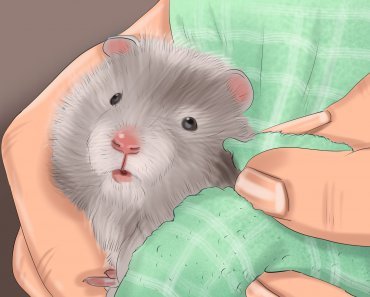Your dog can’t tell you when he hurts, so it’s important to know the signs that indicate pain and discomfort.
Your dog seems to be favoring one leg. Or maybe you’ve noticed him trembling. Are these just passing issues, or do they signify something more serious? Dogs that are presenting unusual behaviors or physical abnormalities may be suffering from pain. Because your dog can’t speak, it’s important to be able to recognize any signs that he might be hurting, so you can take the appropriate action to help him feel better.
SIGNS OF PAIN
Pain can afflict any part of your dog’s body, and signs of discomfort can range from the subtle to the obvious. “Not bearing weight on a leg is often a sign of pain,” says vet tech Christine Caplan. “A lack of appetite is almost always an indication that something is wrong, as is not wanting to be handled or touched. Labored breathing or an abnormal heart rate are other indications of pain.”
Following are some of the most common types of pain that dogs are prone to, along with the relevant signs. Any indication of pain or discomfort in your dog should be checked out as soon as possible by a veterinarian.
BACK PAIN
While you may regard back pain as more of a human problem, dogs can develop it too. “Dogs with back pain can present as being quiet or less active, although they can also be in obvious pain,” says veterinarian Dr. Mark Newkirk.
“Disc disease is common in breeds with long backs, such as dachshunds and Basset hounds. Often, this presents as neurologic lameness; that is, the leg is lame because the nerves are not ‘communicating’ with the brain and it therefore drags or collapses.”
Keep in mind: Older dogs often have disc disease that affects their backs.
LEG PAIN
Limping, or an inability to put weight on a limb, are the most common symptoms of leg pain. “Limping in puppies is usually injury-based, and ‘crack fractures’ are often seen,” says Dr. Newkirk. “As the term implies, the bone is cracked, not broken. Splints are often applied.
“Cruciate ligament injury is common in young to middle-aged dogs, especially if they’re into playing Frisbee, flyball, or doing agility, although any dog can tear one in the backyard,” he continues. “These dogs will present as acutely painful, with an inability to put any pressure on the leg.
Arthritis is another major cause of limb pain (as well as back pain) and becomes more common as dogs get older. It also causes stiffness, poor mobility, and difficulty getting up and down. The dog may slow down on walks, or even become reluctant to go for walks.
Keep in mind: Large breeds frequently have hip arthritis or dysplasia.
DENTAL PAIN
Periodontal disease can cause a dog a lot of discomfort. Difficulty eating, head shaking, drooling, dropping food, or pawing at the mouth are all possible indications of dental pain. The dog may also become unwilling to be touched around the head or mouth, and may even get snappy.
ABDOMINAL PAIN
Digestive upsets and diseases are common in dogs, and can lead to abdominal pain as well as diarrhea, constipation, vomiting and other problems. A dog suffering from abdominal pain may be restless, unable to get comfortable when lying down, or can exhibit a hunched posture when standing. Whining, drooling and a lack of appetite are other possible signs of abdominal discomfort.
SKIN PAIN
Allergies and other skin problems can make a dog miserable. It’s not just the incessant itching, but the irritation and soreness caused by the resulting rashes, hot spots and secondary infections. If your dog scratches, licks and bites himself a lot, and his skin looks red and inflamed, he has some type of skin problem and needs veterinary attention.
Keep in mind: Infected ears can also be painful, and manifest as head shaking, scratching, and a reluctance to be touched.
DIAGNOSING AND MANAGING PAIN
Again, the first step when your dog is in pain is to take him to the vet so he or she can determine the exact cause. Only then can a treatment plan be developed.
Dr. Newkirk advises against the use of aspirin, ibuprofen, or similar pain-relieving drugs due to side effects such as vomiting, stomach ulceration, and more. Many human medications, given at the wrong dose, can be very harmful to dogs.
Keep in mind: “Veterinarians have many options for treating pain, including medications, laser therapy, and acupuncture,” Dr. Newkirk says. “Holistic veterinarians may add chiropractic, herbs, and homeopathy.”
A variety of pain relief chews or tablets for dogs contain potent all-natural ingredients such as willow bark extract, cat claw extract, and turmeric. These products provide powerful anti-inflammatory aid without notable side effects. Supplements containing fish oil can also help calm pain by lubricating the joints. It’s a good idea to work with your vet to determine the best product for your dog’s issues and needs.
Understanding any signs of pain in your dog, and what might be causing them, is vitally important. Being able to recognize when something is “off ” means you can get it dealt with promptly, helping your dog back to balance, wellness, and quality of life.
MENTAL / EMOTIONAL PAIN
Dogs can also suffer from mental and emotional pain. Nervous behaviors such as pacing or hiding, loss of interest in normal activities, and abnormal sleep patterns can all be signs of emotional distress.
Body language cues that indicate mental/emotional pain include turning away from people, growling or snapping, showing the whites of the eyes, flattened ears, or tucking the tail between the legs.
Discovering the cause of your dog’s stress, and either eliminating or minimizing it, can help, but he might also need calming aids such as flower essences or essential oils, or guidance from an animal behaviorist




























